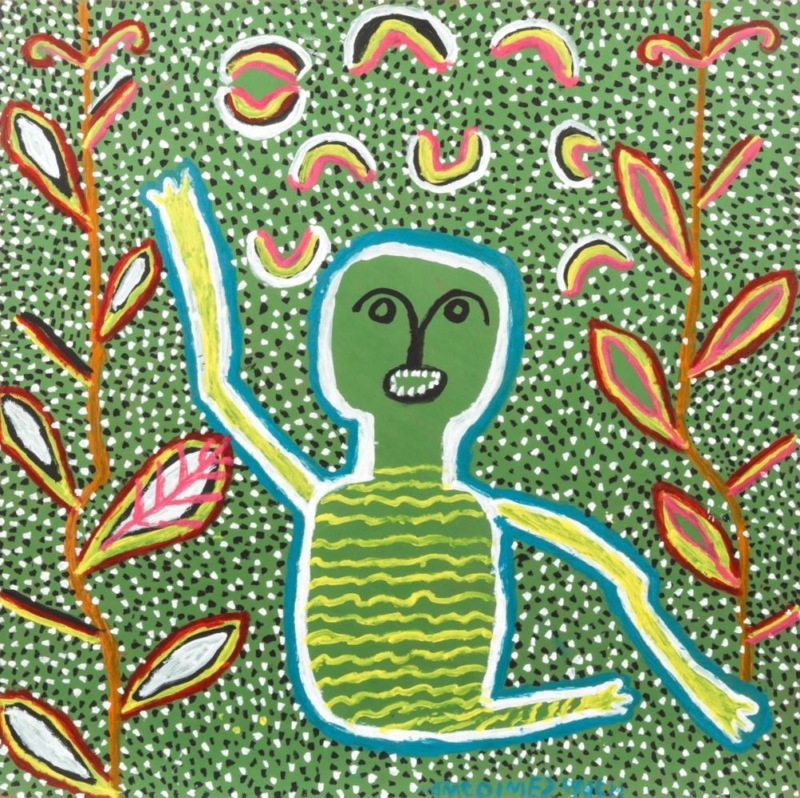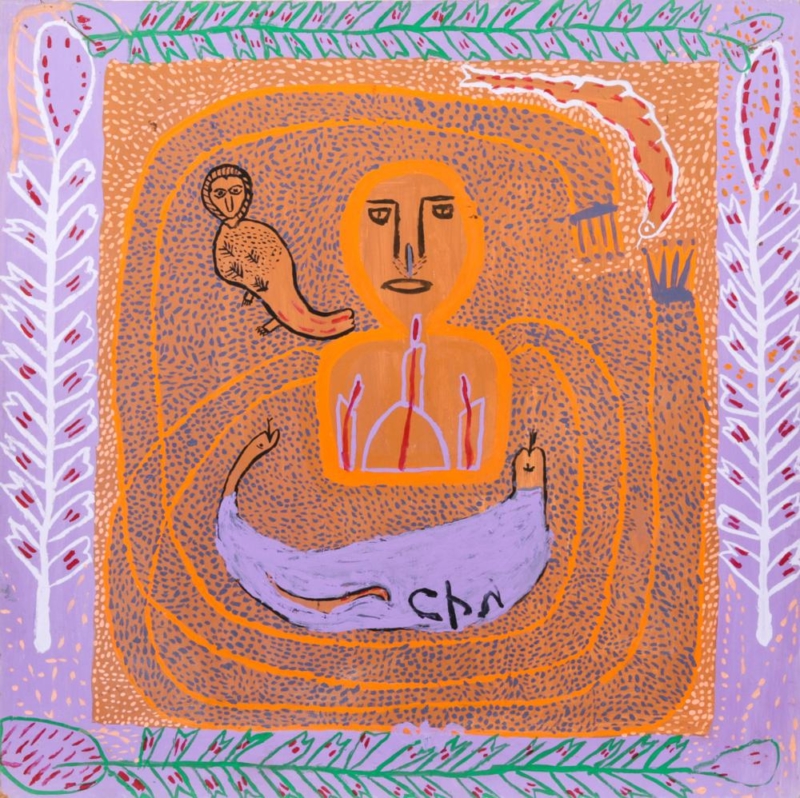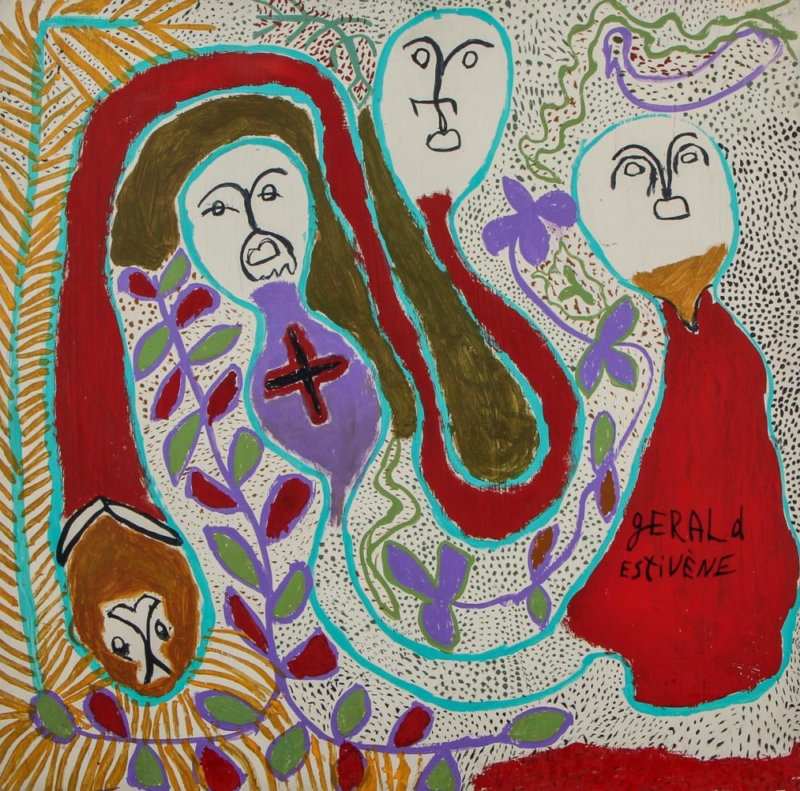Art Brut was the term coined in 1945 by Jean Dubuffet to refer to art created by people outside the artistic world who have no academic training.
His works are the reflection of a pure creativity, without being contaminated by the imitation of already established models. Dubuffet affirms that we all carry a creative potential that social norms nullify. This is observed in the creations of people who remain outside of society, such as inmates of psychiatric hospitals, self-educated, maladjusted or elderly.
From 1945 Dubuffet collected these works, founding in 1948 the “Compagnie d’Art Brut” together with Breton , M. Tapié and others. The collection consists of 5,000 works, which were exhibited for the first time in 1967 at the Musée des Arts Decoratifs in Paris, and were finally installed in 1976 at the Château de Beaulieu in Lausanne. The collection is formed mostly by works of psychiatric patients, especially schizophrenic; despite this, Dubuffet always rejected the idea of psychiatric art stating that “there is no art of the crazy”. Art brut constitutes a fundamental aspect of the primitivism assumed throughout the 20th century by certain artists who remain outside of modernity.

Background
In 1922, the psychiatrist Hans Prinzhorn, who worked at the Heidelberg Psychiatric Clinic, published the first detailed study of the visual expressions of interned people. Prinzhorn argues that the artistic expression of these people emerges from the same source as any other professional plastic expression, classifying them in the expression, the game, ornamental decorative, which sets the pace and rule, copying and the need for the symbolic. Extremely valued the production made by the sick.
The work of Prinzhorn quickly exerted influence in the artistic medium ( Alfred Kubin, Oskar Schlemmer, Paul Klee, Max Ernst , and André Breton ). Between 1929 and 1933, several temporary exhibitions were held in France, Germany and Switzerland . In 1933 the Heidelberg clinic is taken over by Nazism. Carl Schneider installs the extermination program for the mentally ill and uses the collection for Nazi propaganda purposes. A series of exhibitions begins in Germany and Austria led by Joseph Goebbels , who disparagingly compared the Heidelberg collection with works of modern art artists such as Paul Cézanne, Klee, Marc Chagall, Wassily Kandinsky, Van Gogh, Oscar Kokoshka and others. These exhibitions had the title “Degenerate Art”, where about 600 works of contemporary art were presented, which had been confiscated in the previous weeks by the nationalists in the German museums.

Reflection of his work
His works are the reflection of a pure creativity without being contaminated by the imitation of already established models. Dubuffet affirms that we all carry a creative potential that current social norms cancel out. This is seen in the creations of people who remain outside society, such as: psychiatric hospital inmates, self-educated, lonely, maladjusted or elderly.
From 1945 Dubuffet collected these works, founding in 1948 the ” Compagnie d’Art Brut ” with André Breton , Michel Tapié and others. The collection consists of 5,000 works, which were exhibited for the first time in 1967 at the Museum of Decorative Arts in Paris , and were finally installed in 1976 at the Château de Beaulieu in Lausanne .
The collection is formed mostly by works of psychiatric patients, usually schizophrenic; despite this, Dubuffet always rejected the idea of ”psychiatric art” stating that “there is no art of the crazy”.
Art brut constitutes a fundamental aspect of the primitivism assumed throughout the twentieth century by certain artists who remain outside modernity.
Features
• Rejection of the beautiful.
• Rough, spontaneous, grotesque and unreflective character, close to the unconscious.
• Creations that reflect the inner world of the artist.
• Rejection of traditional approaches to art (coherence, organization, homogeneity …).
• Expression of misery and deformation.
• Great freedom of stroke and chromatic (at first predominance of earthy colors, then lighter and varied colors).
• Use of very different materials mixed with paint (tar, sand, cement, leaves, butterfly wings, pieces of wood, etc.).
• Creation of very expressive material effects.
• Unique themes developed during long seasons (heads, figures, cows, urban landscapes).
Collection of Art Brut Lausanne
In 1947, Dubuffet founded the Compagnie de l’Art brut in Paris with a circle of like-minded people, including the surrealist André Breton, whose aim was to document and collect alternative art. In the basement of René Drouin’s Paris gallery there were solo exhibitions of works by Adolf Wölfli, Aloïse Corbaz and others.
In 1949, 200 works by 63 artists were presented there under the title L’art brut préferé aux arts culturels. In the catalogue, Dubuffet defined art brut as a subversive, alternative art form outside the suffocating “cultural arts”. In this text, conceived as a manifesto, he also stressed that Art brut, beyond cultural norms, is not automatically identical with psychopathological creations: “We believe that the effect of art is the same in all cases, and that there is no art of the mentally ill any more than there is art of the stomach sick or the kneeling sick.

In 1951 Dubuffet dissolved the association and moved the collection to East Hampton in the USA, where the artist Alfonso Ossorio supervised it. She returned to Paris in 1962 and was exhibited at the Musée des Arts décoratifs in 1967.
In the following years, the number of works grew considerably. In 1975, he donated his collection, which had now grown to 15,000 objects, to the city of Lausanne, where it has been exhibited since 1976 in a public museum, the Collection de l’art brut. Its founding director was Michel Thévoz, and the museum is now run by Lucienne Peiry.
In Haiti the Saint-Soleil Movement began in 1973, under the direction of the artist TIGA (Jean Claude Garoute). TIGA provided art supplies for the self-taught artists, many of whom were peasants living in an isolated community in the mountains above Port-au-Prince. Many of the artists like Louisianne Saint-Fleurant, Prospere Pierre-Louis, Levoy Exil, Dieuseul Paul, Payas, Saint-Jacques Smith became world renown and sought after by collectors and museums.
